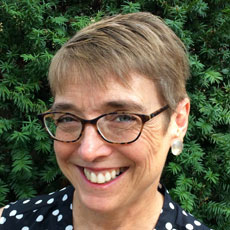Question 2 is not just about charter schools, but about who makes our education policy

The charter school referendum on November’s ballot has been characterized as being about whether one is pro-charter or anti-charter. That is not what Question 2 is about. One can like charter schools but be firmly in the Vote-No-on-Two camp. That’s because Question 2 is really about who makes education policy in Massachusetts and how – the elected Legislature in discussion with the state board of education and stakeholders (including parents, educators and taxpayers), or the entire Massachusetts voting population after a big-money advertising campaign. As Boston Globe writer Joan Vennochi notes, the latter is “a terrible way to make policy decisions about public education.” That’s why I’m voting to send this issue back to the legislature by voting no on Question 2.
![]() Most voters in Massachusetts know little – good or bad – about charter schools. This kind of school doesn’t exist in most districts because they didn’t just spring up like corner stores in response to parent demands. They were created as a very small part of the state’s Educational Reform Act of 1993, a large-scale effort to improve education for all students in Massachusetts. This comprehensive bill mandated state curriculum standards and testing, new policies to prevent patronage hiring and staff-parent councils in every school. Most important, the bill increased state funding for the lowest-income districts in Massachusetts. Creating a limited number of charter school experiments – 25 in the original bill – was only a small part of that much larger improvement plan.
Most voters in Massachusetts know little – good or bad – about charter schools. This kind of school doesn’t exist in most districts because they didn’t just spring up like corner stores in response to parent demands. They were created as a very small part of the state’s Educational Reform Act of 1993, a large-scale effort to improve education for all students in Massachusetts. This comprehensive bill mandated state curriculum standards and testing, new policies to prevent patronage hiring and staff-parent councils in every school. Most important, the bill increased state funding for the lowest-income districts in Massachusetts. Creating a limited number of charter school experiments – 25 in the original bill – was only a small part of that much larger improvement plan.
That plan has had positive effects. Whether you attribute improvements to increased funding, standards and testing, parent engagement, the existence of a small number of charters or all those factors combined, low-income students in Massachusetts are being better educated now than two decades ago. Results on the National Assessment of Educational Progress exam show that reading scores for Massachusetts’ low-income eighth-graders improved from 18th in the nation in 1998 to second in the nation last year when compared with low-income students in other states. In eighth-grade math, the low-income improvement was from 15th in the nation to first in the nation. That doesn’t mean our schools are doing a good enough job educating low-income students – they aren’t. But it does mean our schools are doing a better job than schools in almost every other state. During that time, only a small fraction of low-income students were educated in charter schools. The vast majority were taught in district public schools.
Making decisions by referenda is making decisions by slogan and simplified arguments. Charter school policy is complex and involves how they are funded; how families access them via lotteries; whether they educate their share of students with disabilities and English-language learners; suspension and expulsion policies; their locations; and much more. Evaluating how effective schools are – district schools as well as charter schools – is also complex. If we want to consider charter schools as “public” schools – as part of our public education ecosystem – we should be making charter-related decisions as part of comprehensive policy changes, not via standalone referenda.
We’ve been down this education-policy-by-referendum road before. In 2002, a conservative Silicon Valley businessman named Ron Unz decided, contrary to what research had shown, that non-English-speaking immigrant students in Massachusetts should be educated in one-year English-only immersion programs rather than in three-year transitional bilingual education programs. He spent lots of money on an ad campaign and his referendum passed statewide. (The majority of Cambridge voters rejected it.) With a simple checkmark in the voting booth, Massachusetts voters abolished transitional bilingual programs in every district in the state, including Cambridge, imposing a one-size-fits-all policy for all immigrant students. (Two-way immersion programs were allowed to continue.) How many of these voters knew anything about the educational needs of non-English-speaking students?
How many voters today know enough about education policy to make an informed decision about the charter cap?
Voting yes on a referendum that raises the cap on charters with no other policy changes is like putting a pot of soup on the stove and leaving the house. It might be okay, but that depends on how long you are away, how much water is in the pot and whether there is anything flammable near the stove. If all those conditions are more or less random – you just put the pot on the stove and do nothing else to guarantee safety – there’s danger of a fire.
Whether – and if so, how – the charter school cap needs to be lifted should be decided via the legislative process, not a referendum. A no vote on Question 2 will send this question back to the State House. In the meantime, our goal in Cambridge should be that every child and young person, from infancy and early childhood through high school, post-secondary and beyond, gets the education they need and deserve.
Emily Dexter, Ed.D., is an educator, researcher and first-term member of the School Committee. Her two daughters attended Cambridge Public Schools from kindergarten through high school.

